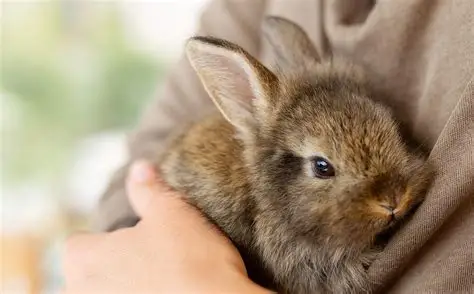Understanding Rabbit Body Language: Signs Every Bunny Owner Should Know🐰
- Iqra Shaikh
- 5 days ago
- 3 min read
📌 What This Blog Contains
🐾 Why Understanding Rabbit Behavior Matters
Rabbits are expressive animals, but they communicate differently than dogs or cats. Learning how to read their subtle signals helps you understand their needs, avoid stress triggers, and build a trusting relationship.
🐇 Common Rabbit Body Language and What It Means
Thumping: A sign of fear or warning. Your rabbit senses danger or is highly alert.
Binkying: A happy leap with a twist mid-air. This means pure joy and excitement!
Flattening: Lying flat with ears back shows fear, submission, or discomfort.
Nudging: Seeking attention, affection, or asking you to move.
Chinning: Rubbing their chin on objects is how rabbits mark territory with scent glands.
💡 Emotional Cues and Social Signals
Teeth Grinding: Soft grinding = contentment. Loud grinding = pain.
Circling Your Feet: Often a mating behavior or sign of affection.
Licking: Shows trust, affection, or grooming behavior.
Ear Positioning: Ears forward = alert. Ears back = relaxed or wary.
Hiding Suddenly: Could indicate stress, loud noise, or illness.
🧠 How to Bond Better Through Observation
Spend time watching your rabbit’s natural behavior daily.
Sit at their level and avoid loud noises or sudden movements.
Offer healthy treats and let them come to you.
Gently mimic their calmness to build trust.

🚩 Warning Behaviors to Watch For
Aggression or biting: May signal pain, fear, or territory issues.
Excessive hiding or lack of movement: Can indicate illness or emotional stress.
Loss of appetite or lethargy: Requires a vet check immediately.
🐾 Final Thoughts
Understanding your rabbit’s behavior is key to building a deep, trusting bond. These gentle pets are more complex than they appear — and once you learn to read their signals, your relationship will only grow stronger.
💡 Pro Tip
Never force interaction. Let your rabbit approach you first — especially during bonding or socialization.
📌 Summary
Rabbits express emotions through subtle body language.
Learn signs of happiness, fear, stress, and affection.
Responding to their cues improves trust and wellbeing.
Sudden changes in behavior can indicate health problems.
❓ FAQs for Understanding Rabbit Behavior
What does it mean when my rabbit thumps its hind legs?
Thumping usually signals fear, alarm, or annoyance. It's a rabbit’s natural way of warning others of perceived danger.
Why does my bunny flop onto its side suddenly?
This is a sign of total relaxation and trust. It means your rabbit feels safe and content in its environment.
Is it normal for rabbits to grind their teeth?
Soft grinding shows comfort and happiness, while loud or constant grinding may indicate pain and needs a vet check.
What does it mean when my rabbit nudges me with its nose?
Nose nudges often signal a demand for attention, petting, or treats — it’s your bunny’s way of communicating.
Why does my rabbit run in circles around me?
This behavior is often associated with affection or mating instincts, especially in unneutered rabbits.
👉Read next:
Also a hamster parent?
Check out our ultimate hamster care guide
Follow us on:



Comments